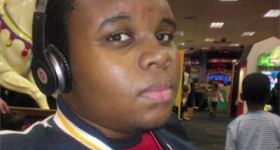Originally posted at New America Media
by
The authorities in Prince William County, Virginia, are known for their tough rhetoric on immigration. But now, according to a local civil rights group, that hard-line vision has translated into something more concrete: a redistricting map that unfairly undercuts the voting power of the county’ s growing Hispanic, Asian and black populations.
The group, Virginia New Majority, says the map approved by Board of County Supervisors in April does not reflect the county’ s demographics -- ethnic communities now make up over 50 percent of the population.
Political leaders in the suburban Washington, DC County say they incorporated input from a range of community and nongovernmental groups, and deny their proposed map disenfranchises minorities. “It’ s not discriminatory,” said Jason Grant, a Prince William County spokesman.
But Virginia New Majority, which claims 60,000 members across the state, is pushing an alternative map, and has threatened to sue if the county’ s plan isn’t changed to increase the number of minorities in most districts.
“When they dilute our vote … our communities get forced to the outskirts of democracy,” said Connie Linares, a county resident who belongs to the group.
Prince William’s redistricting dispute, like its larger debate over immigration, is inextricable from the breakneck demographic change the county has experienced over the past 10 years. And because so many of the nation’s suburbs have experienced similar changes, the battle of the redistricting maps has resonance far beyond Northern Virginia.
Redistricting isn’ t only a state or congressional issue, as it is often presented in the press, but a local one as well, and it is at the city or county level where immigrant groups and minorities often take the first steps toward exercising a political voice.
As suburbs become more diverse, redistricting needs to accommodate the electoral clout of these groups.
“A Widely Diverse Community”
In 2000, Prince William County was more than two-thirds white, and still considered a sleepy if growing exurb for those that didn’t mind long commutes to the DC area.
Over the next decade, the county’s overall population jumped by 43 percent, according to the 2010 Census.
But Hispanic population surged almost five times as fast, by 204 percent, and the Asian population soared by 172 percent.
Now Prince William is one of the nation’s most diverse counties. Of its 402,000 residents, slightly less than half are “white only,” the Census data show. The rest— 78,000 blacks, 82,000 Hispanics and 30,000 Asians— are a polyglot mix of ethnic groups, including Central American and Mexican immigrants and Southeast Asians.
As in other parts of the United States where race was once thought of as a black-and-white issue, the influx of immigrants in the county has upended the old ways of doing things.
The new, more complex demographics means it is not so easy to carve out districts for seven Board of County Supervisor seats, Grant said. (One seat, that of county chairman, is at-large and does not depend on a district.)
“We are a widely diverse community throughout the county,” Grant said in a phone interview. “You have a lot of pocket areas. That creates a bit of a challenge.”
Currently, all eight members of the Board of County Supervisors are white. This board passed its redistricting map unanimously on April 18.
Updating Redistricting Law?
Redistricting at its simplest involves reapportioning pockets of population to make sure that all voting districts remain equal in population, based on the latest Census data. But map drawers must also make sure that they don’t discriminate against a particular group in violation of the 1965 Voting Rights Act (VRA).
But the Act was written to deal with the country’s black and white race problem, and does not offer clear guidance on how to deal with multiple minorities and their coalitions.
In the past, the VRA was primarily concerned with so-called “majority-minority districts” -- those in which members of a single minority group make up the majority of voters.
Districts could violate the Act if they “cracked” minority voters -- drew map lines to dilute minority strength -- or “packed” them (put as many minority voters as possible into one district, to minimize the number of seats they might win).
The Prince William County case shows what’s likely to become more common in the future, according to redistricting experts. No single ethnic group in the county -- even in Virginia New Majority’ s proposed “fair” map -- holds more than 30 percent of the voting-age population in a district.
Yet, Virginia New Majority insists the Prince William map does discriminate because it will prevent ethnic voters -- who may not share ethnicity but do share common concerns such as lack of health care -- from influencing elections to the degree that they should.
There is “voter cohesion among Latinos, Asians and blacks,” said organizer Tram Nguyen. If their numbers were fairly represented in the district maps, “they would constitute a minority coalition district” -- one in which two or more minority groups that are politically cohesive can attempt to claim VRA protection from attempts to dilute their strength.
The U.S. Supreme Court, for its part, has yet to rule on whether minority coalitions are covered under the VRA.
But that hasn’t stopped grassroots activists from northern New Jersey, Los Angeles, and elsewhere around the country from advocating for “minority coalition districts.”
Even in Mississippi, Latinos have become plentiful enough in the Memphis suburbs and poultry-processing areas of the state to begin figuring in the calculations of redistricting activists, said Mike Sayer, a lawyer with community organizing group Southern Echo.
In the Chicago suburbs, the growth of Hispanic, Asian and Middle Eastern populations (and decline of some African-American constituencies) has created a need for coalitions to replace the old zero-sum approaches, in which one racial group’s gain is another's loss, according to Joshua Hoyt, executive director of the Illinois Immigrant Rights Coalition.
However, “it takes a whole new set of political muscles to do that,” he warned.
Accusations of Gerrymandering
The district map approved by Prince William’s supervisors is “obviously” and “grotesquely” gerrymandered to dilute minority electoral strength, said Rishi Awatramani, Virginia New Majority communications director.
One district, called Coles, extends an arm northward to snake around the city of Manassas and encompass neighborhoods on the city’ s northern perimeter. That area is precisely where Hispanics and blacks are concentrated, Virginia New Majority says.
If these neighborhoods were formed into a new district -- rather than split among Coles and two other districts, as the county-drawn map attempts to do -- the new district would have a voting-age population that is 57 percent Asian, black and Hispanic.
Prince William is known for its policy of close cooperation with Immigration and Customs Enforcement (ICE), and the anti-immigrant rhetoric of its elected officials, Awatramani added. “This map is an extension of that vision. They have no desire to be inclusive.”
The maps also differ markedly toward the southern region, near the Potomac River. The county-drawn proposal contains three districts -- Neabasco, Potomac and Woodbridge -- in which the voting-age population would be roughly 20 percent black. Under the Virginia New Majority plan, the number of potential black voters in each district would increase to around 30 percent. When Asians and Hispanics are taken into account, the total minority voting-age population in the districts would exceed 50 percent.
At the same time, Virginia New Majority’ s map would create a couple of more lopsidedly white districts. The official county map, in contrast, spreads the white and non-Hispanic white voting-age populations more evenly across the seven districts.
The Citizenship Problem
One significant problem with Virginia New Majority’ s data is that it is based on voting-age residents and does not account for the percentage of noncitizens who are currently ineligible to vote. Courts consider voter eligibility as they weigh potential discriminatory effects.
Whatever the merits of each map, the U.S. Department of Justice will have the next say on Prince William’ s redistricting.
Prince William -- like hundreds of counties in 16 states, most of them in the South -- is required by the Voting Rights Act to prove that its redistricting plan does not have a discriminatory effect. This process, known as pre-clearance, is meant to fend off any resurgence of Jim Crow-style voter discrimination. Not infrequently, the U.S. Attorney General sends counties and state legislatures back to the drawing board.
A DOJ decision on the Prince William plan is expected later this month.
But even if the county-drawn map is approved, Virginia New Majority can still turn to the courts to block its implementation. If a lawsuit is filed, it will likely hinge on whether Hispanics, Asians and blacks together should be considered a cohesive voting group.
“It raises a very interesting question about the ability of these different groups to collaborate,” said John Logan, a professor of sociology at Brown University.
Courts generally tend to err on the side of granting discretion to local authorities in redistricting, Logan noted.
He said he was not aware of a single legal challenge to a map that successfully argued that an ethnic coalition had been disenfranchised.
One problem is proving that diverse groups really are cohesive, he said. Despite their common concerns, “there’s been a great deal of mistrust and suspicion, too.”









Comments